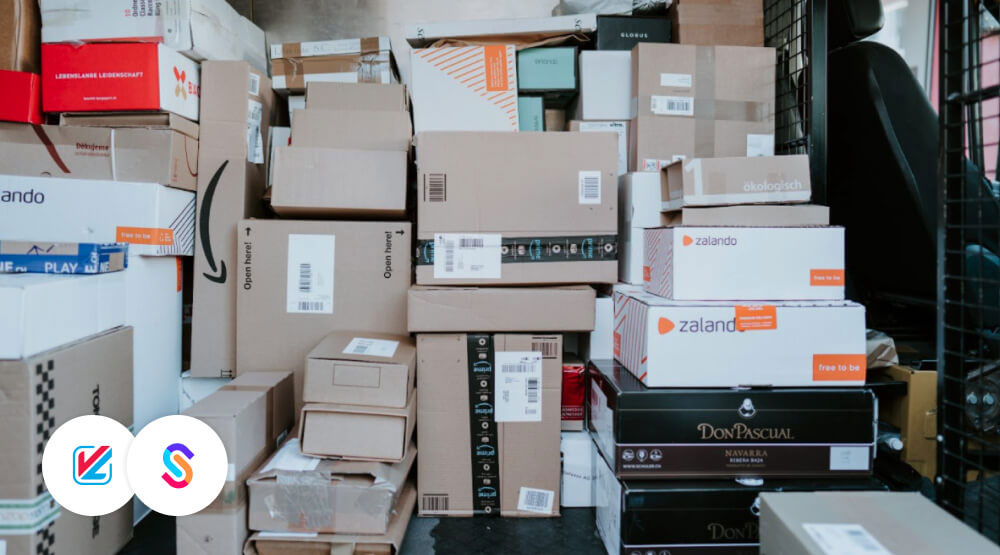Guest Post by VL OMNI
So you’ve decided to expand into B2B eCommerce but you aren’t sure if your Shopify store is ERP integration ready? You’re not alone. B2B companies across the world are looking at the benefits of selling their products through their Shopify stores. However, growing buyer demands and changing wholesale channels are encouraging B2B sellers to rethink their whole approach to selling.
In general, many businesses first jump in or expect results from B2B eCommerce without fully understanding how different B2B is from direct to consumer (D2C) selling. There are so many opportunities that exist in B2B ecommerce today, research forecasts that B2B ecommerce site sales will reach nearly $1.77 trillion in 2022. In fact, the statistics position B2B as more profitable than B2C in certain industries.

But ERP Integration can be a serious challenge to B2B and B2C Merchants alike, serious strategic planning and coordination is needed to be integration ready. This blog will take you through four key indicators that should be present in your eCommerce business strategy to be ready for ERP Integration.
- Back-end Integration Strategy
- Readying ERP Customer Data
- Readying ERP Pricing Structure
- Meeting Customer Expectations
Back-end Integration Strategy
A large portion of getting your Shopify store B2B ERP Integration ready is strategy.
The front end of the website is often where a lot of time and energy is spent. That is important because you need a user experience that brings back B2B customers again and again. But the back-end absolutely must be where all the heavy, functional lifting occurs. Your chosen ERP will take on a significant role in your ecommerce strategy. Integrating your back-end systems must be strategically thought out. This includes having all other applications integrated and automated to work together so the whole business runs with efficiency and scalability.
Shopify Merchants considering B2B ERP integration must choose an ERP and the rest of their applications and systems with integration in mind. The back-end B2B experience includes systems that both receive and push data to the front end. Having an ERP that has quality API capabilities is going to allow you to integrate across your technology stack.
We at VL OMNI recommend developing a strategic plan that takes into consideration what your existing technical infrastructure can handle and investing in technology that has the capability to give you your strategic results consistently over time.
Integrating ERP Customer Data
Customer data is one of the foundations of B2B eCommerce. Your customer data in a traditional B2B scenario will come from your ERP or CRM. Merchants must understand at a strategic level where their data needs to be, and when across all their applications and systems in their business. When that is identified you can create an integration plan that allows your ERP and other applications to communicate with each other and reduce manual data entry and errors.
Here are some customer data considerations to ask your business before ERP integration:
- Having a strategic plan to push all relevant customer data from your chosen ERP to Shopify.
- Mapping out where your customer data comes from and all the other applications that data must be held.
- Knowing your data flows within your company and have accounted for discounts, taggings etc.
Integrating ERP Pricing Data
Pricing can be very complex for B2B Merchants, and when considering integration, understanding your pricing structure is key to creating a strategic integration plan.
The first thing to do is to understand and build out your pricing structure that aligns with what the front-end can handle. This will be different from what the ERP can handle. The complexity of your pricing structure will determine how difficult it will be to integrate to your Shopify store.
Here are some pricing considerations to think about before ERP integration:
- Have a clear and complete pricing structure for B2B purchases.
- If multiple price lists are apart of my business, know where data lives and where it needs to go within my technology stack.
- If product offerings are customer specific and how those restrictions impact the customer experience on the front-end of my website.
Meeting Customer Expectations
Whether you are B2B or B2C, the customer experience reigns supreme. Customers expect the same customer experience across all channels and platforms. Breaking down the customer journey and all of its potential pain points across all your business will help identify where in your processes there must be increased efficiency, scalability and internal visibility.
This is where the importance of data integration comes in for Merchants. Agile and scalable multi-point system integration allows you to connect your disparate data and systems together. Creating a strategic data integration plan means looking at each place in your supply chain an order goes through and ensuring that data is seamlessly flowing to each system correctly and on time.
Automating your data movements significantly increases your ability to have order visibility from the first purchase order to final delivery. Giving Merchants confidence to know where their orders are and relay that information to customers.

Having all your back-end systems connected together in a strategic and holistic way that makes sense to you, empowers your brand to see where there are errors or snags in the supply chain and then being able to fix them instantly.
Our VL OMNI managed iPaaS integration platform empowers scaling businesses across the world to fully integrate and automate their key workflows between applications. We help Merchants deliver on customer demands without juggling multiple systems and using manual processes and workarounds.
Integrate your systems, channels, partners, and applications together in ways that matter most to your business. This will enable you to put your customers first and consistently deliver a customer experience across all touchpoints.
About the author
Vanessa Matos is a Digital Marketing Manager at VL OMNI. As an integration platform partner for real-time, agile, and scalable iPaaS data integration, VL OMNI empowers businesses to accelerate growth by integrating their systems, channels, partners, and applications together in ways that matter most to them.
Explore more
To learn more about the SparkLayer and VL OMNI integration, visit our VL OMNI partner page.
















